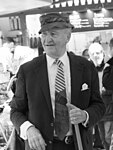1991 Swedish general election
| |||||||||||||||||||||||||||||||||||||||||||||||||||||||||||||||||||||||||||||||||||||||||||||||||||||||||||||||||||||||
All 349 seats to the Riksdag 175 seats were needed for a majority | |||||||||||||||||||||||||||||||||||||||||||||||||||||||||||||||||||||||||||||||||||||||||||||||||||||||||||||||||||||||
|---|---|---|---|---|---|---|---|---|---|---|---|---|---|---|---|---|---|---|---|---|---|---|---|---|---|---|---|---|---|---|---|---|---|---|---|---|---|---|---|---|---|---|---|---|---|---|---|---|---|---|---|---|---|---|---|---|---|---|---|---|---|---|---|---|---|---|---|---|---|---|---|---|---|---|---|---|---|---|---|---|---|---|---|---|---|---|---|---|---|---|---|---|---|---|---|---|---|---|---|---|---|---|---|---|---|---|---|---|---|---|---|---|---|---|---|---|---|---|---|
| |||||||||||||||||||||||||||||||||||||||||||||||||||||||||||||||||||||||||||||||||||||||||||||||||||||||||||||||||||||||
| |||||||||||||||||||||||||||||||||||||||||||||||||||||||||||||||||||||||||||||||||||||||||||||||||||||||||||||||||||||||

General elections were held in Sweden on 15 September 1991.[1] The Swedish Social Democratic Party remained the largest party in the Riksdag, winning 138 of the 349 seats.[2]
The election was notable due to the rise of a new right-wing party named New Democracy which succeeded in securing a parliamentary mandate for the first (and last) time. The four parties of the centre-right coalition (the Centre Party, Liberal People's Party, Moderate Party, and Christian Democratic Society Party) were allocated a combined total of 171 seats, 17 more than the two left-wing parties' 154, but still less than the 175 necessary for a majority. Thus the centre-right bloc was dependent upon New Democracy to secure a parliamentary majority.
This election was also famous for the performance of the Donald Duck Party, which collected 1,535 votes, enough to make it the 9th largest in Sweden. The protest party's platform consisted of the demand for "free liquor and wider sidewalks."
Results
| Party | Votes | % | Seats | +/– |
|---|---|---|---|---|
| Swedish Social Democratic Party | 2,062,761 | 37.7 | 138 | –18 |
| Moderate Party | 1,199,394 | 21.9 | 80 | +14 |
| Liberal People's Party | 499,356 | 9.1 | 33 | –11 |
| Centre Party | 465,175 | 8.5 | 31 | –11 |
| Christian Democratic Society Party | 390,351 | 7.1 | 26 | +26 |
| New Democracy | 368,281 | 6.8 | 25 | New |
| Left Party | 246,905 | 4.5 | 16 | –5 |
| Green Party | 185,051 | 3.4 | 0 | –20 |
| Other parties | 53,487 | 1.0 | 0 | 0 |
| Invalid/blank votes | 92,159 | – | – | – |
| Total | 5,562,920 | 100 | 349 | 0 |
| Registered voters/turnout | 6,413,407 | 86.7 | – | – |
| Source: Nohlen & Stöver | ||||
By municipality
-
Votes by municipality. The municipalities are the color of the party that got the most votes within the coalition that won relative majority.
-
Cartogram of the map to the left with each municipality rescaled to the number of valid votes cast.
-
Map showing the voting shifts from the 1988 to the 1991 election. Darker blue indicates a municipality voted more towards the parties that formed the centre-right bloc. Darker red indicates a municipality voted more towards the parties that form the left-wing bloc.
-
Votes by municipality as a scale from red/Left-wing bloc to blue/Centre-right bloc.
-
Cartogram of vote with each municipality rescaled in proportion to number of valid votes cast. Deeper blue represents a relative majority for the centre-right coalition, brighter red represents a relative majority for the left-wing coalition.











